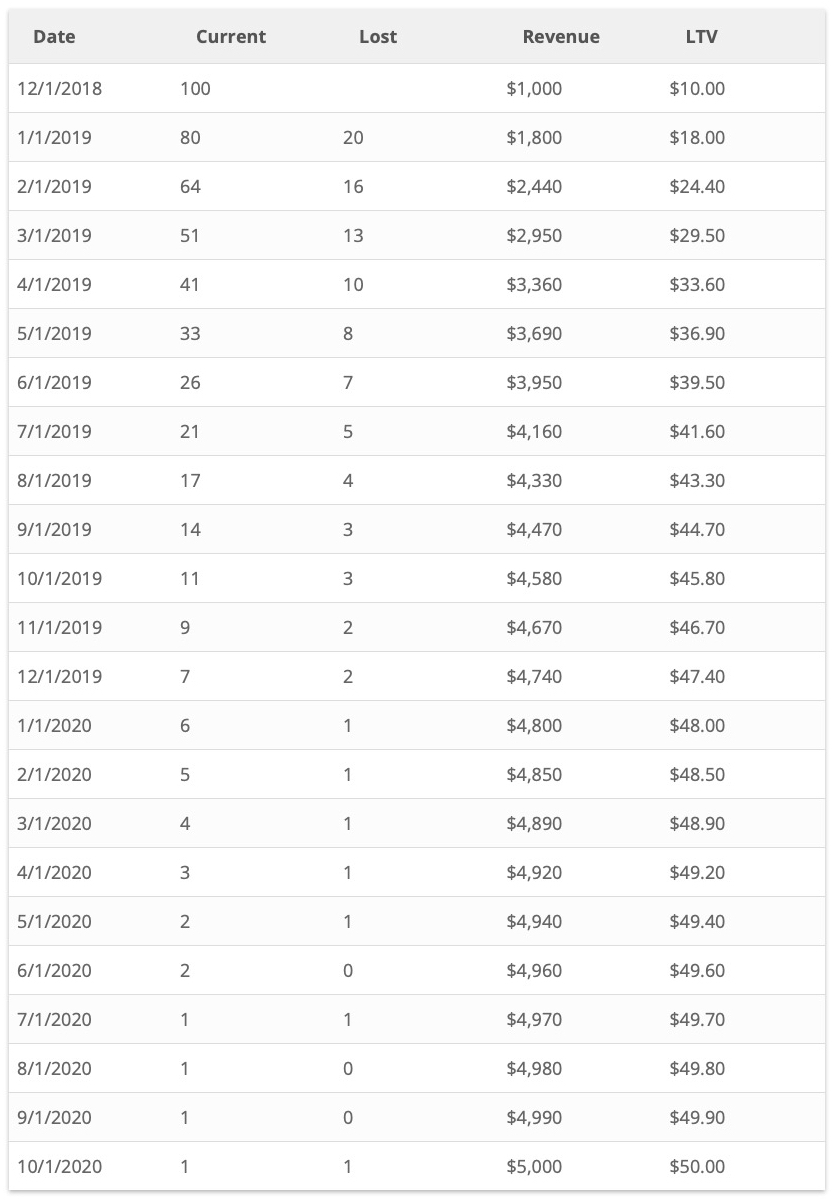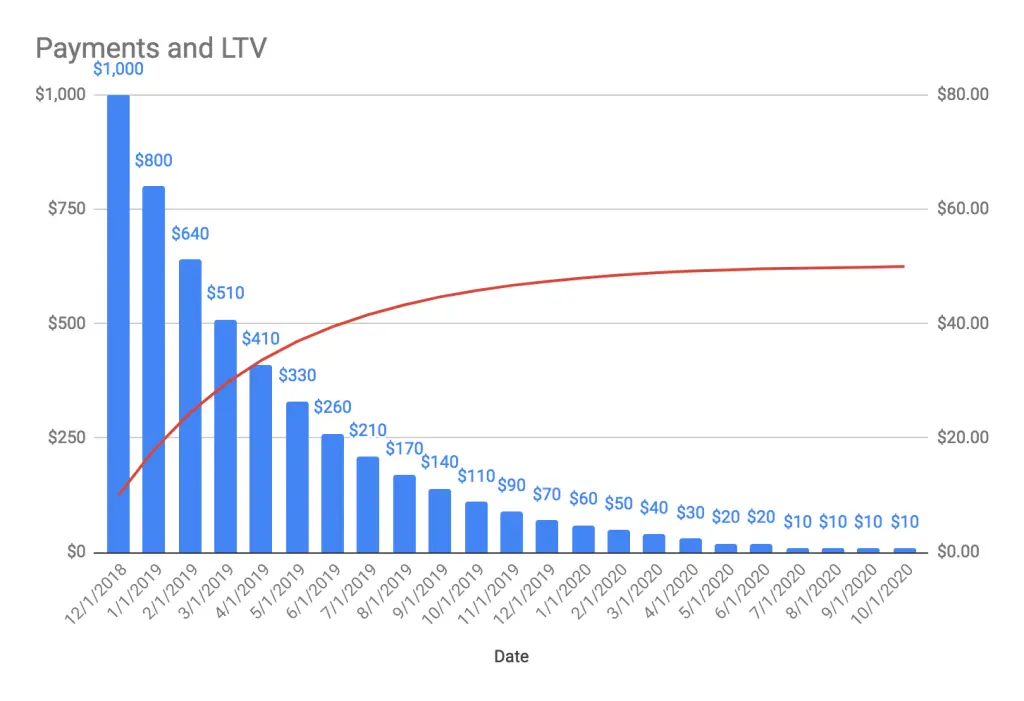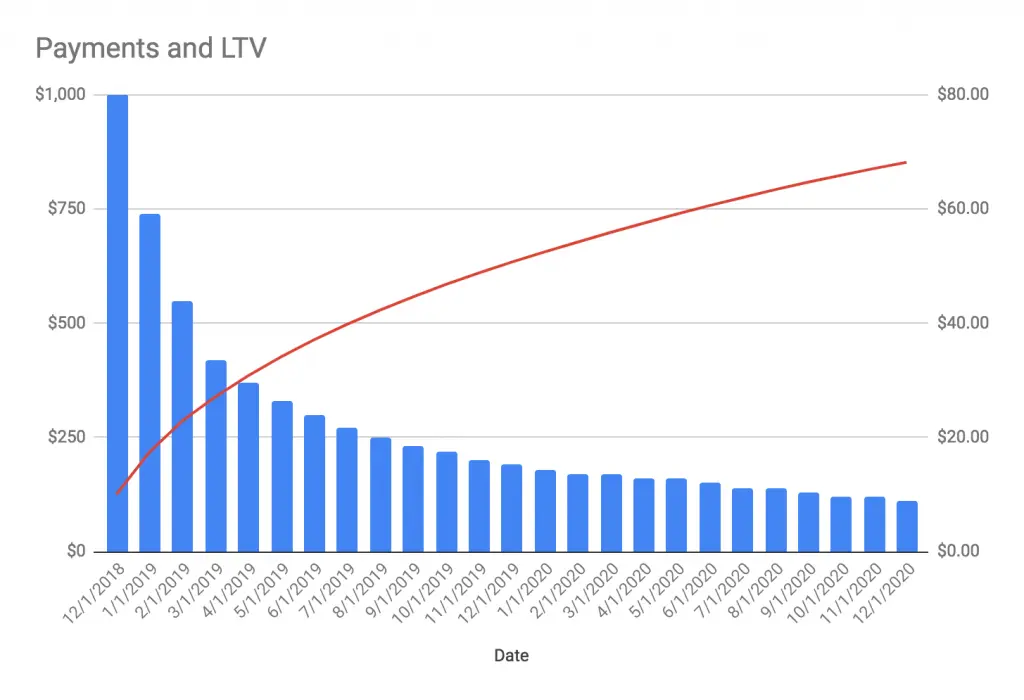How much revenue do you think you will receive from your next customer? Will they stay for a few months, then cancel? Or will they join the ranks of your multi-year subscribers?
Each of these questions relies on understanding the lifetime value (LTV) of a customer and using that value to compare natural segments of your users to find veins of satisfied (and long-subscribing) customers. How else would you know whether spending $30 or $60 to acquire a new customer is worthwhile?
CALCULATING SUBSCRIBER LTV
Take, for example, an imaginary site for Arctic enthusiasts called PolarFlix. They charge $10 per month and have a fairly high monthly churn rate of 20%.
One of the most common ways to measure the lifetime value of a customer is using the churn rate and your average revenue per user (ARPU). We can combine those two values to a group of users and, on average, it should reflect the LTV of our average new customer. The formula looks like ARPU/Monthly Churn. For PolarFlix, this is 10/.2 = $50.
Imagine that PolarFlix adds 100 customers on December 1st. We would expect this cohort to accrue payments to PolarFlix each month. Here’s a table showing how this “Monthly Churn Model” behaves. (Note: the formula includes partial customers, but these examples are rounded.)
 They receive $50 per customer, so now they can allocate some of that to marketing, operations, and content licensing and keep the rest as profit. However, if they did this, they would be underinvesting in their business.
They receive $50 per customer, so now they can allocate some of that to marketing, operations, and content licensing and keep the rest as profit. However, if they did this, they would be underinvesting in their business.
In subscription-based businesses, the retention rate doesn’t follow average churn. Instead, what we see at Brightcove is that new customers churn at a very high rate, often as much as 30-40% monthly churn over the first few billing cycles, while more tenured subscribers churn at a rate in the single digits.
 The customer loss curve for our example company, PolarFlix, shows the LTV for this cohort of customers is $66 on October 1, 2020, with over ten customers still active. For a service with 100,000 subscribers, that’s a $1.6 million difference.
The customer loss curve for our example company, PolarFlix, shows the LTV for this cohort of customers is $66 on October 1, 2020, with over ten customers still active. For a service with 100,000 subscribers, that’s a $1.6 million difference.
So, how do we make our formulas match our observed lifetime spending? Peter Fader and Bruce Hardie’s 2007 publication, How to Project Customer Retention, has been instrumental in our work with contractual (i.e. renewing subscription) businesses. We use historical data about our customers and create a retention curve. A retention curve shows the probability, as a value from 0 to 1, that a customer with a tenure of n days, will become a customer of tenure n+1 days. From that, it’s simple to show how much revenue we expect to receive.
With the Fader and Hardie method, we can even predict the curve beyond the longest tenure of our customers, something that Kaplan-Meier, a very common survival analysis method, cannot do. There is an important caveat to this method. As you can see in the chart above, the curve may only reach 0 many years in the future. You have to choose some cutoff date for valuing these customers.
At Brightcove, we looked at the actual retention curves of our media customers and chose to estimate LTV through 1,000 days of subscription. This allows 2 cycles of churn for annual subscriptions and, for typical churn rates, captures enough of the extra value from the long-tenured subscribers to make a material difference in the LTV.
AN ACCURATE LTV ENABLES BETTER INVESTMENT
An accurate LTV number lets you invest with confidence in acquiring more customers, license more content to address churn, or allows you to lower the price of your service to capture even more customers.
In addition, you can use LTV and churn measurements to compare natural segments of your customer base to understand what part of your customer base is healthy and which deserves additional investment. Given the advantages to the predictive model, we are upgrading Brightove Audience Insights to base all LTV values on these retention curves.




